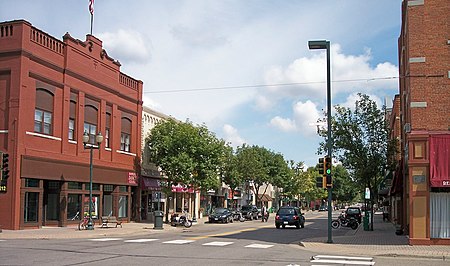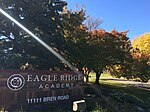Hopkins Commercial Historic District

The Hopkins Commercial Historic District covers 2.5 blocks of Main Street in downtown Hopkins, Minnesota. The district was significant regional destination for agricultural, industrial, and commercial activity. Areas around Hopkins historically produced many raspberries and local industrial activity eventually contributed to Minneapolis-Moline which manufactured industrial machinery. At the peak, 50 streetcars a day went down Main Street. Downtown Hopkins is about a five-minute walk away or .25 miles (0.40 km) from the future Downtown Hopkins station on the Southwest LRT. There are 32 contributing properties, 5 non-contributing properties and one non-contributing site. The district was listed on the National Register in January 2022. The nomination was done by the city of Hopkins and the Southwest LRT project office. A public celebration featuring Dean Phillips and Ilhan Omar was held in April 2022 to commemorate the district joining the National Register.
Excerpt from the Wikipedia article Hopkins Commercial Historic District (License: CC BY-SA 3.0, Authors, Images).Hopkins Commercial Historic District
9th Avenue South,
Geographical coordinates (GPS) Address Nearby Places Show on map
Geographical coordinates (GPS)
| Latitude | Longitude |
|---|---|
| N 44.92436 ° | E -93.41144 ° |
Address
9th Avenue South 5
55343
Minnesota, United States
Open on Google Maps





